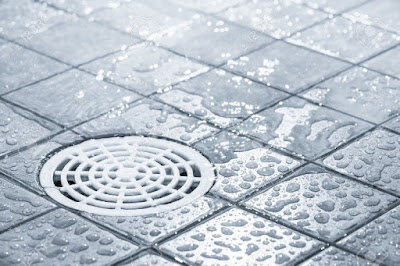Have you ever wondered where it comes from and how you can tackle it?
References
Limescale is that chalky white film from hard water which can show up on your kitchen faucets, household equipment and appliances, and bathroom fixtures. It is one of the biggest cleaning challenges and actually comes from the minerals in hard water. Removing and preventing limescale requires just a little knowledge about hard water and how to deal with it effectively. Here we have gathered for you some basic information that will surely help you:
Limescale Effects on Plumbing
Buildup of limescale within washing machines and dishwashers can make your machines run less efficiently. In a kettle, limescale stops the heating process from working as it should and can even damage it over time. On faucets and around drains, buildup of limescale is certainly unappealing, but did you know that your mineral-laden hard water is also creating hazardous sedimentary formations around the joints in your pipes? Over time, this can lead to some nasty, tough to get rid of clogs.
Most importantly, research has shown that just 6mm of limescale can reduce energy efficiency by a staggering 40% and, in a moderately hard water area, 6mm of limescale can form in pipework or on heat exchangers in just two years! The consequence is that appliances affected by limescale must make an extra effort to work properly, using more water and consuming more energy.
Eliminating Existing Limescale
A mild acidic solution is the best way to rid your fixtures of limescale. However, we wouldn’t necessarily recommend this for pipework, in which case you should contact a professional for assistance, who can evaluate the problem and provide you with the best solution.
The good news is that you can buy brand-name limescale removers, but it’s also good to know there are many common household substances that will also do the trick. Two of the most effective substances are lemon juice and ordinary vinegar. Vinegar will weaken and soften most limescale very efficiently and effectively.
The best method of cleaning off limescale with your at-home products is to remove your shower head, faucets, etc., if possible, and place them in a bucket with vinegar for approximately an hour. You should start to see the limescale cracking and coming right off and then you can clean the element with a brush. The problem with removing limescale is not in finding an appropriate, safe acid around the home, but making sure the acid stays in contact with the surface long enough. Our advice, just be patient. Of course, removing fixtures isn't always an option, so the next best thing is to fasten a bag filled with vinegar around your faucet or shower head, and secure it to your fixtures or pipe joints to let it work. Nowadays, you can even find special “baggies” for that purpose, as can be seen in the image below. Just be creative and careful, and use what you have close at hand.
If so much limescale has built up that vinegar isn't able to fully remove it, you can prepare and apply a solution with a cleaner made to tackle calcium, lime, and rust. Just be sure to wear rubber gloves since you will be using a stronger solution that could burn your skin. Keep in mind that a tougher solution could also have a contrary effect on more delicate surfaces, so read the instructions carefully before using it, and while waiting for the solution to work, keep checking on the surface to prevent damage. When talking about tiles and other surfaces, limescale deposits are much easier to get rid of. In most cases, scrubbing gently with lemon juice will make them shiny again!
Dish washing machines are not the exception; they also can be cleaned with vinegar. To remove hard water deposits, simply add a solution of 1 cup 80% vinegar with 20% water to the bottom of the dishwasher and run the dishwasher on a Low or Energy-Saving cycle. Stop the dishwasher halfway through the cycle, and let the solution stand at the bottom of the machine for about 30 minutes. This process should get your machine back into great condition again.
References
Cleanipedia.
(2017). How to remove limescale and hard water deposits. Obtenido de Cleanipedia:
https://www.cleanipedia.com/gb/in-the-home/how-to-remove-limescale-and-hard-water-deposits
Wear, B. (05 de July de 2017). How to Remove and
Prevent Lime Scale. Obtenido
de Brian Wear Plumbing:
https://www.brianwearplumbing.com/plumbing-tips/how-to-remove-and-prevent-lime-scale




















